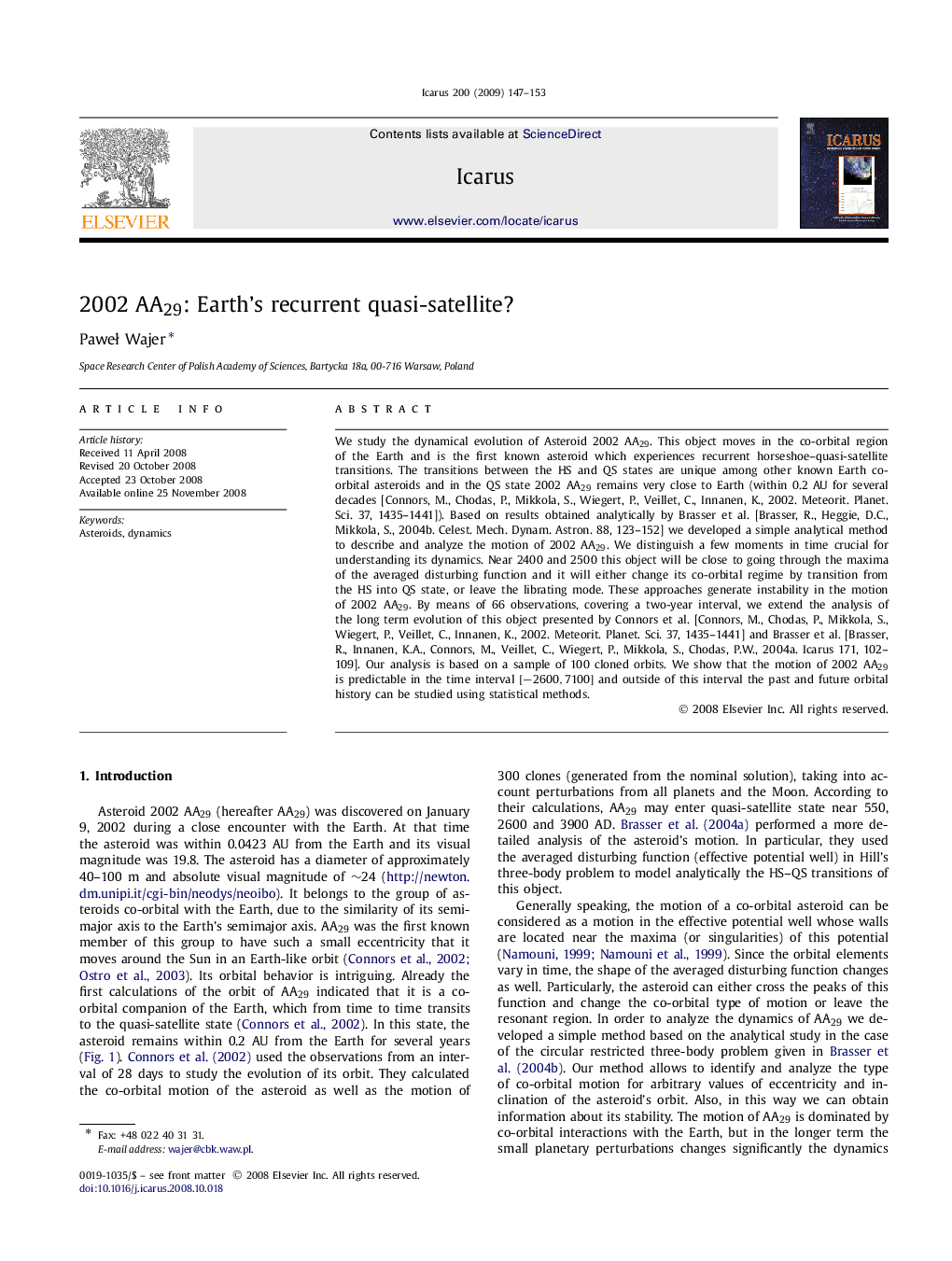| Article ID | Journal | Published Year | Pages | File Type |
|---|---|---|---|---|
| 1774813 | Icarus | 2009 | 7 Pages |
We study the dynamical evolution of Asteroid 2002 AA29. This object moves in the co-orbital region of the Earth and is the first known asteroid which experiences recurrent horseshoe–quasi-satellite transitions. The transitions between the HS and QS states are unique among other known Earth co-orbital asteroids and in the QS state 2002 AA29 remains very close to Earth (within 0.2 AU for several decades [Connors, M., Chodas, P., Mikkola, S., Wiegert, P., Veillet, C., Innanen, K., 2002. Meteorit. Planet. Sci. 37, 1435–1441]). Based on results obtained analytically by Brasser et al. [Brasser, R., Heggie, D.C., Mikkola, S., 2004b. Celest. Mech. Dynam. Astron. 88, 123–152] we developed a simple analytical method to describe and analyze the motion of 2002 AA29. We distinguish a few moments in time crucial for understanding its dynamics. Near 2400 and 2500 this object will be close to going through the maxima of the averaged disturbing function and it will either change its co-orbital regime by transition from the HS into QS state, or leave the librating mode. These approaches generate instability in the motion of 2002 AA29. By means of 66 observations, covering a two-year interval, we extend the analysis of the long term evolution of this object presented by Connors et al. [Connors, M., Chodas, P., Mikkola, S., Wiegert, P., Veillet, C., Innanen, K., 2002. Meteorit. Planet. Sci. 37, 1435–1441] and Brasser et al. [Brasser, R., Innanen, K.A., Connors, M., Veillet, C., Wiegert, P., Mikkola, S., Chodas, P.W., 2004a. Icarus 171, 102–109]. Our analysis is based on a sample of 100 cloned orbits. We show that the motion of 2002 AA29 is predictable in the time interval [−2600,7100][−2600,7100] and outside of this interval the past and future orbital history can be studied using statistical methods.
